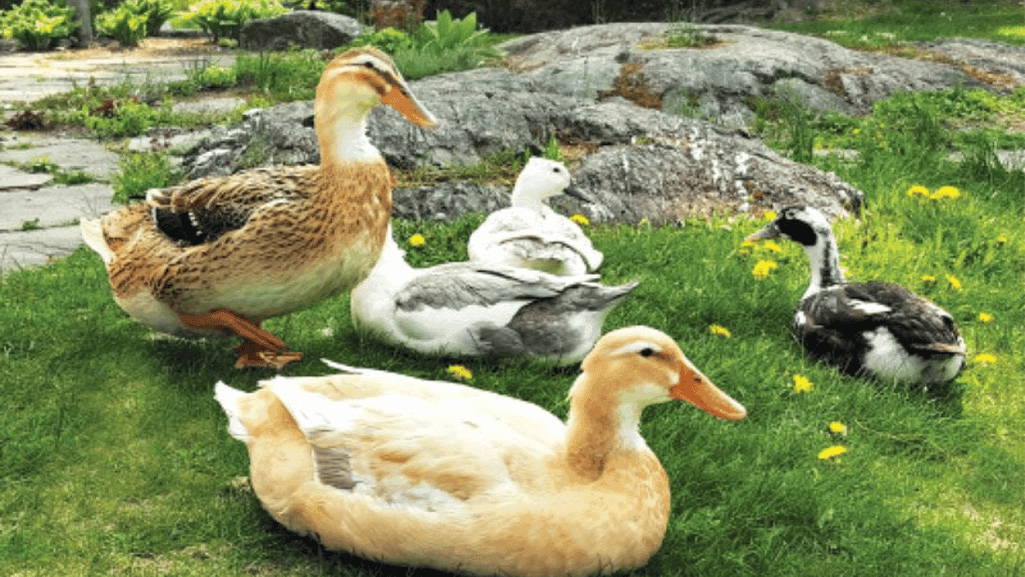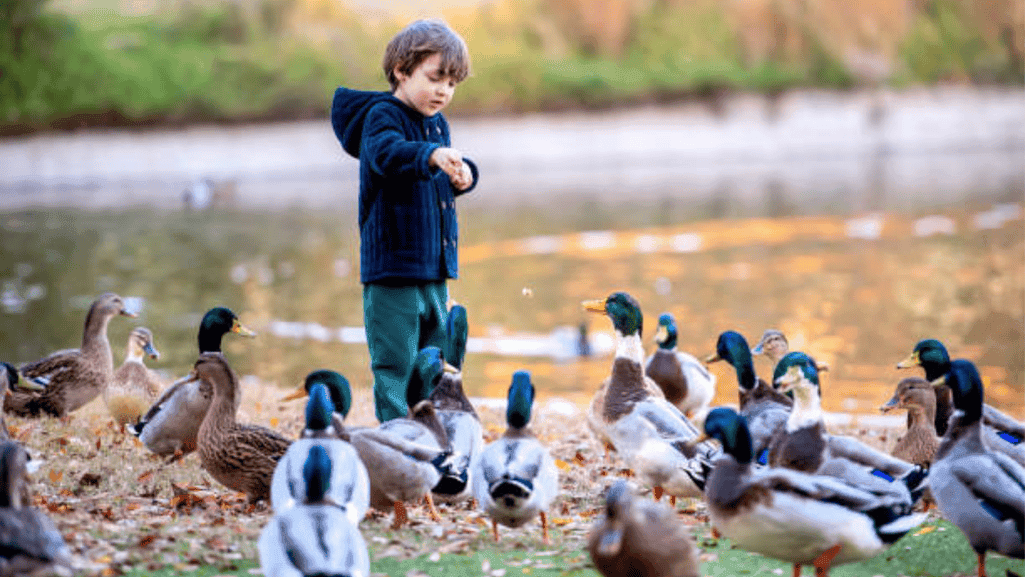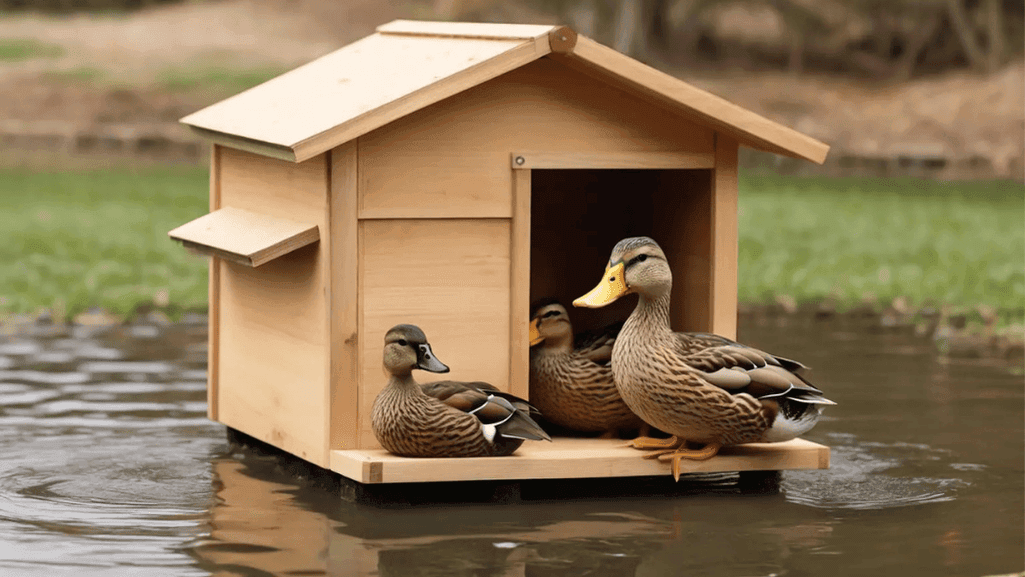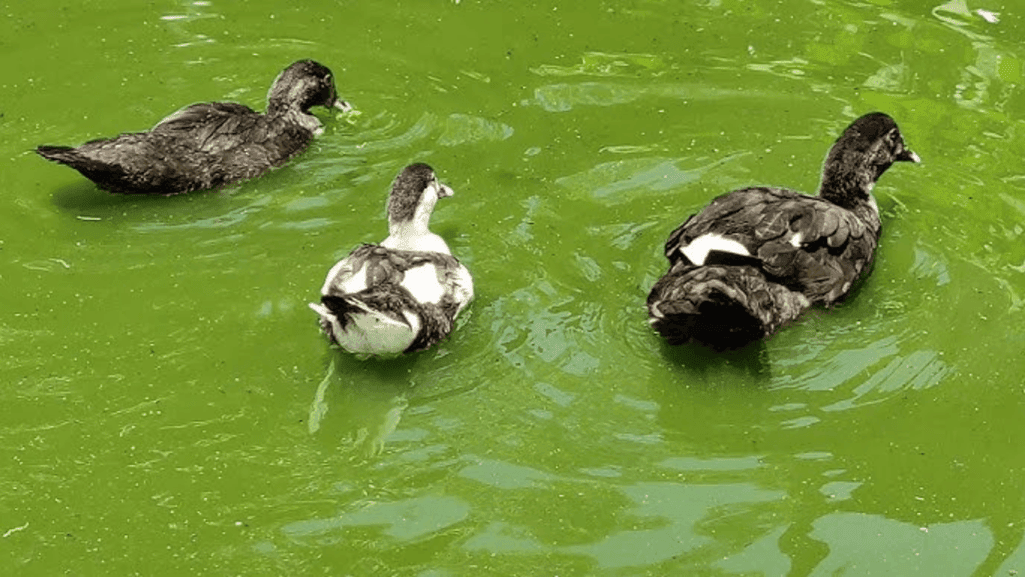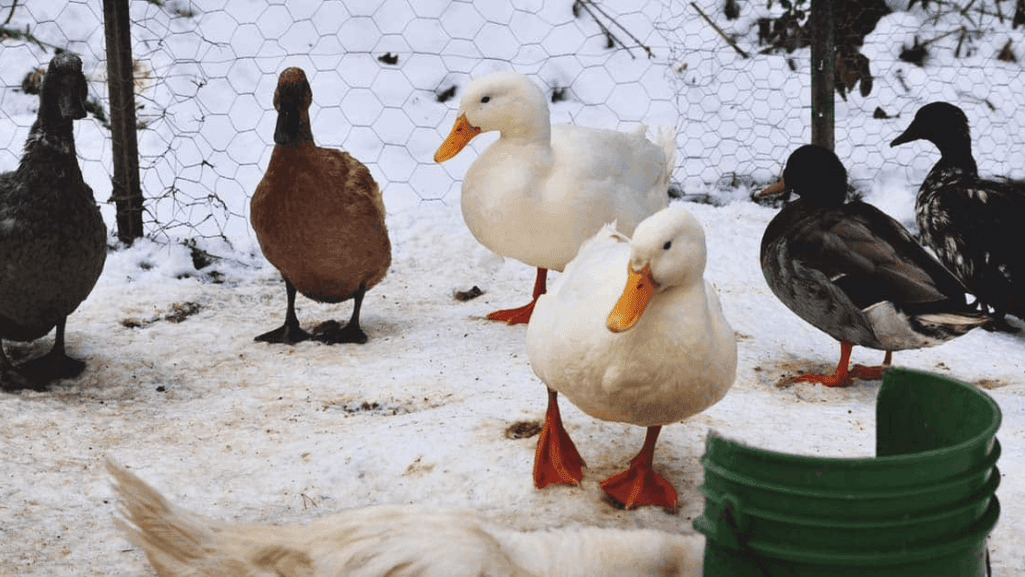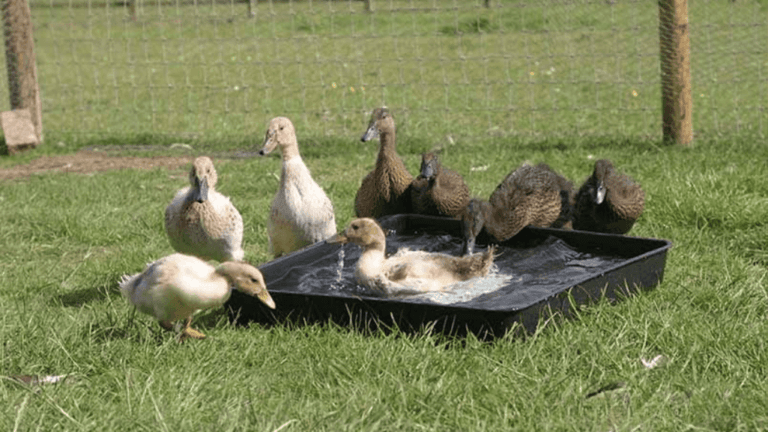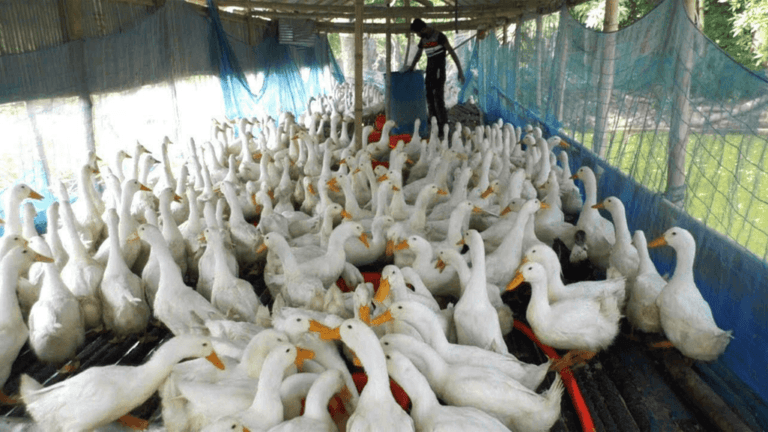Keeping ducks can be a rewarding experience, whether you’re looking for a new pet or a productive addition to your homestead. These social and hardy animals offer numerous benefits, from fresh eggs to natural pest control. With the right care, they can thrive in various environments, making them a versatile choice for beginners and experienced keepers alike.
This guide will walk you through everything you need to know, from selecting the right breed to advanced care practices. You’ll learn how to create a safe and comfortable environment for your ducklings, ensuring they grow into healthy adults. Whether you’re comparing them to chickens or exploring their unique needs, this article provides expert insights to help you succeed.
Key Takeaways
- Ducks are social animals and thrive best in pairs or groups.
- Proper housing and nutrition are essential for healthy growth.
- Choose breeds like Khaki Campbell for high egg production.
- Duck eggs are richer in protein and nutrients than chicken eggs.
- Regular access to water is crucial for their health and well-being.
Setting Your Goals: Why Raise Ducks?
Deciding to keep ducks begins with understanding your goals and how they fit into your lifestyle. Whether you’re interested in fresh eggs, natural pest control, or simply enjoying their quirky personalities, clarifying your objectives is the first step to success.
Clarifying Your Objectives
Start by asking yourself why you want to keep ducks. Are you looking for a steady supply of eggs? Ducks like the Khaki Campbell are known for their high egg production, often outperforming chickens in colder months. Alternatively, you might be drawn to their ability to control pests naturally, reducing the need for chemicals in your garden.
If companionship is your goal, ducks are social birds that thrive in pairs or small groups. Their playful nature can bring joy to your homestead. For those considering meat production, breeds like the Cayuga are versatile and efficient.
Determining Duck-Keeping Priorities
Once you’ve defined your goals, prioritize your needs. For example, if egg production is your focus, ensure you have the right breed and a consistent feeding routine. Ducks require access to clean water daily, which is essential for their health and egg-laying capabilities.
Compared to chickens, ducks are hardier in extreme weather and quieter, making them a great choice for urban or suburban settings. However, they do need more space and water access, so evaluate your homestead conditions carefully.
Experienced keepers often recommend starting with a small flock of ducklings to learn their unique needs. This approach allows you to build confidence and adjust your care routine as you go.
By setting clear goals and understanding your priorities, you’ll create a rewarding and sustainable duck-keeping experience.
Selecting the Right Duck Breed and Sourcing Your Ducklings
Choosing the right duck breed is a crucial step in ensuring a successful and enjoyable experience. Whether you’re looking for high egg production, meat, or a charming pet, understanding your options is key. Ducks come in various sizes and purposes, so evaluating your needs will help you make the best choice.
Exploring Breed Options
When selecting a breed, consider factors like size, purpose, and aesthetics. For example, Khaki Campbells are excellent layers, often outperforming chickens in colder months. If you’re interested in meat production, breeds like the Cayuga are versatile and efficient. For those seeking ornamental birds, the Indian Runner’s upright posture adds a unique charm to any flock.
Visit reputable hatchery websites like Metzer Farms or Murray McMurray Hatchery to compare breeds. These platforms provide detailed descriptions, pricing, and availability of sex-linked ducklings, making it easier to find the perfect match for your goals.
Comparing Hatchery and Local Feed Store Options
Sourcing your ducklings can be done through hatcheries or local feed stores. Hatcheries often offer a wider variety of breeds and ship directly to your door. However, local feed stores allow you to see the birds in person and avoid shipping stress.
Experienced keepers recommend starting with a small flock of 2-4 ducklings to learn their unique needs. This approach ensures you can provide proper care and adjust your routine as you gain experience.
Checklist for Selecting the Right Breed
- Determine your primary goal (eggs, meat, or companionship).
- Research breed-specific features and advantages.
- Compare pricing and minimum orders from hatcheries.
- Evaluate your space and climate for breed suitability.
- Ensure you have the resources for proper care and feeding.
By following this checklist, you’ll be well-prepared to select the ideal duck breed and source healthy ducklings for your homestead.
Preparing the Brooder: Heat and Bedding Essentials
Creating a safe and comfortable brooder is essential for the health of your ducklings. This space serves as their first home, providing warmth and protection during their early weeks. Proper setup prevents common issues like leg problems and ensures they stay dry and cozy.
Optimal Temperature Settings
Maintaining the right heat is crucial for duckling development. Start with a temperature of 90°F in the first week. Gradually reduce it by 5°F each week until it reaches 70°F. This gradual adjustment helps them adapt without stress.
Use a heat lamp to provide consistent warmth. Place it at one end of the brooder to create a temperature gradient. This allows the ducklings to move closer or farther away as needed. Monitor their behavior closely. If they huddle together, they’re too cold. If they avoid the heat, it’s too warm.
Choosing the Right Bedding Material
The right bedding keeps the brooder clean and comfortable. Absorbent materials like wood shavings, paper towels, or chopped straw work best. Avoid slippery surfaces, as they can lead to leg injuries.
Clean the bedding daily to prevent moisture buildup and odors. Ducklings are messy with water, so ensure the material can handle spills. Proper ventilation is also key to maintaining a healthy environment.
“A clean and warm brooder is the foundation for raising strong ducklings. Balance heat with proper ventilation to prevent drafts.” – Lauren Klouda
By focusing on heat and bedding, you’ll create an ideal environment for your ducklings to thrive. These steps ensure they grow into healthy, happy adults.
Essential Feeding Practices for Healthy Ducklings
Proper nutrition is the cornerstone of raising healthy ducklings. Their rapid growth phase demands a balanced diet rich in essential nutrients. From selecting the right feed to understanding supplementation needs, every detail matters.
Choosing the Right Feed Product
During the first two weeks, ducklings require a high-protein diet, ideally 18-20%. Non-medicated chicken starter feed is a suitable option if specialized duckling food is unavailable. This ensures they get the necessary nutrients without harmful additives.
After the initial phase, transition to a grower feed with 16% protein. This prevents conditions like Angel Wing, caused by excessive protein intake. For ducklings nearing laying age, switch to a layer feed to support egg production.
Supplementation Guidelines with Brewer’s Yeast
Ducklings need higher levels of niacin compared to chicks. Adding brewer’s yeast to their feed is an effective way to meet this requirement. Sprinkle 1 pound of brewer’s yeast per 40 pounds of food to promote healthy bone and feather development.
Wetting or mashing the feed can make it easier for small ducklings to digest. However, discard any uneaten wet food promptly to prevent mold growth. Chopped greens can also be introduced gradually to diversify their diet.
“Brewer’s yeast transformed my ducklings’ growth. Their legs strengthened, and they became more active within days.” – Sarah, experienced duck keeper
For more tips on caring for young ducklings, check out this guide on 3-week-old ducklings. By following these feeding practices, you’ll ensure your ducklings grow into strong, healthy adults.
Watering Strategies: Keeping Ducks Hydrated and Safe
Proper hydration is essential for the health and well-being of your flock. Ducks rely on water not only for drinking but also for grooming and foraging. A clean and reliable water system ensures they stay healthy and active.
Establishing a Clean Water System
Ducks need access to fresh water every day. Stagnant or dirty water can lead to health issues. Use shallow dishes or modified containers to reduce spillage and mess. Clean the containers regularly with a vinegar-and-water solution to prevent bacteria buildup.
Innovative designs like plastic jugs or DIY waterers can make the process easier. For example, a five-gallon bucket with small holes can serve as a simple yet effective water source. Ensure the height of the holes matches the size of your ducks to prevent drowning hazards.
Transitioning from Brooder to Outdoor Water Sources
As ducklings grow and feather out, they can transition to outdoor water sources. Start by introducing shallow containers in a controlled area. Gradually increase the depth as they become more comfortable.
Monitor the quality of outdoor water closely. Ducks are messy and can quickly dirty their water. Regular cleaning and supervision are key to maintaining a safe environment.
“A clean water system is the backbone of duck care. It keeps them hydrated, healthy, and happy.” – Experienced Duck Keeper
By prioritizing clean water and safe designs, you’ll meet your ducks’ needs and ensure their long-term health. These strategies are simple yet effective for any flock size.
Building a Secure and Functional Duck House
Your ducks’ home should be a sanctuary that protects them from predators and harsh weather. A well-designed house ensures their safety, comfort, and long-term productivity. Whether you’re building from scratch or repurposing materials, focus on durability and functionality.
Designing Predator-Proof Housing
Predators like raccoons, foxes, and snakes pose a constant threat to your flock. To create a secure house, use solid walls and 1/4” – 1/2” wire mesh for openings. Bury a strip of wire mesh around the perimeter to prevent digging. Install safety latch eye and hook locks to keep clever predators out.
Windows and door gaps should be no larger than 1/3” to block smaller intruders. A covered run with wire mesh adds an extra layer of protection. These measures ensure your duck house is 100% predator-proof.
Ensuring Proper Ventilation and Space
Proper ventilation is crucial to prevent moisture buildup and maintain air quality. Include windows or vents that can be adjusted based on the weather. For insulation, line the walls with contractor plastic during winter to shield against biting winds.
Provide at least 4 square feet of space per duck inside the house. For outdoor runs, aim for 125 square feet per bird. This ensures they have room to move, forage, and stay healthy.
“A secure and well-ventilated duck house is the foundation of a happy flock. It’s worth the effort to get it right.” – Experienced Keeper
Incorporate thick bedding like straw for comfort and warmth. Ducks prefer nesting on the floor, so ensure the bedding is clean and dry. Regular cleaning, at least twice a month in summer and once in winter, keeps the environment hygienic.
By focusing on these design elements, you’ll create a home that supports your flock’s safety and well-being. A well-built duck house is an investment in their health and productivity.
Expert Tips on Raising Ducks
Caring for ducks requires a blend of patience, knowledge, and consistency to ensure their well-being. Whether you’re new to duck keeping or have years of experience, these expert tips will help you create a thriving environment for your flock.
Best Long-Term Care Practices
Establishing a daily routine is essential for the health of your duck. Start with regular feeding and watering schedules. Ducks thrive on consistency, so aim to provide meals at the same times each day. Include a mix of high-quality feed and fresh greens to keep them nourished.
Periodic health checks are equally important. Inspect your flock for signs of illness, such as lethargy or changes in appetite. Regular handling helps you spot issues early and builds trust. Offer occasional treats like peas or mealworms to encourage positive interactions.
Enrich their environment with activities like foraging. Ducks love to explore, so provide safe outdoor spaces where they can dig and search for insects. This not only keeps them entertained but also supports their natural behaviors.
Utilizing Expert Insights from Experienced Duck Keepers
Seasoned keepers often stress the importance of gentle handling. Spend time with your flock daily to foster a bond. This makes them more comfortable as pets and easier to manage during health checks or relocations.
One common pitfall is neglecting niacin supplementation. Ducks require higher levels of this nutrient compared to chickens. Add brewer’s yeast to their feed to support healthy bone and feather development.
“Building trust with your ducks takes time, but it’s worth the effort. Regular, gentle handling makes them feel safe and secure.” – Experienced Keeper
Finally, create a balanced routine that addresses their needs. Clean their living space weekly to prevent odors and ensure hygiene. Provide fresh water daily, as hydration is crucial for their health.
By following these expert tips, you’ll create a rewarding and sustainable experience with your flock. These practices ensure they remain healthy, happy, and productive for years to come.
Identifying and Sexing Your Ducklings
Determining the sex of your ducklings early can help you manage your flock more effectively. Whether you’re planning for egg production or maintaining a balanced group, knowing the gender of your birds is essential. This guide covers physical and behavioral indicators, as well as reliable methods for early gender identification.
Physical and Behavioral Indicators
One of the first signs of gender in ducklings is their size. Males, or drakes, are often slightly larger than females, or hens. Another key indicator is the shape of the bill. In some breeds, males have a brighter or more distinct bill color compared to females.
Behavioral cues also provide clues. Female ducklings tend to start quacking earlier, while males produce a softer, raspier sound. By six weeks of age, these vocal differences become more pronounced, making it easier to identify their gender.
Methods for Early Gender Identification
Early sexing can be challenging, but certain methods improve accuracy. Vent sexing, performed within the first two days, is a precise technique. However, it requires practice and care to avoid injury. For beginners, observing tail feathers is a safer option. Males often develop a curled feather around eight weeks old.
Another reliable method is voice sexing. Females produce loud quacks, while males make a low, raspy sound. This technique is particularly useful when ducklings are transitioning outdoors, as their vocalizations become clearer.
“Voice sexing is one of the easiest ways to identify gender in older ducklings. Females are much louder and more vocal than males.” – Experienced Keeper
For more detailed guidance on methods for sexing ducklings, explore this comprehensive resource. Proper identification ensures a balanced flock and helps you make informed decisions about breeding and management.
As your ducklings grow, consider their readiness for outdoor environments. Learn more about transitioning ducklings outdoors to ensure their safety and comfort.
Routine Health and Grooming Practices for Ducks
Maintaining the health of your ducks requires consistent care and attention to detail. Regular health checks and grooming routines ensure they stay healthy and happy. By monitoring their growth and feather development, you can catch potential issues early and provide the best care possible.
Monitoring Growth and Feather Development
Tracking your duck’s growth is essential for their well-being. In the first few weeks, ensure they gain weight steadily. A healthy baby duck should double its weight within the first week. If growth seems slow, adjust their diet or consult a vet.
Feather development is another critical indicator. By the third week, they should start growing their adult feathers. Watch for signs of delayed feathering, which could signal nutritional deficiencies. Adding brewer’s yeast to their feed can support healthy feather growth.
Regular Health Checks and Preventative Care
Weekly health checks are a must for any duck keeper. Examine their eyes, feathers, and feet for abnormalities. Look for signs of lethargy, changes in appetite, or unusual behavior. These could indicate underlying health issues.
Observing your ducks at different times, including night, can provide valuable insights. For example, if they’re restless at night, it might signal discomfort or stress. Addressing these issues promptly ensures their long-term health.
- Check their weight and growth weekly to ensure they’re on track.
- Inspect their feathers for cleanliness and proper development.
- Monitor their behavior during the day and night for signs of distress.
- Provide a balanced diet with supplements like brewer’s yeast for optimal health.
“Regular health checks and grooming are the foundation of a healthy flock. Early intervention can prevent many common issues.” – Experienced Keeper
By integrating these practices into your routine, you’ll ensure your ducks thrive. Consistent care not only keeps them healthy but also strengthens your bond with these charming birds.
Integrating Ducks into Your Homestead Environment
Integrating ducks into your homestead can transform your space into a thriving ecosystem. These birds are not only charming but also highly functional, offering benefits like pest control and egg production. With the right strategies, you can create a harmonious environment where ducks and other animals coexist seamlessly.
Maximizing Space for Free Ranging
Free-ranging ducks can enhance their natural behaviors while reducing feed costs. However, safety is a top priority. Predators like raccoons and foxes are a constant threat. To protect your flock, use secure fencing and bury wire mesh around the perimeter. This prevents digging and keeps your ducks safe.
Rotational grazing is another effective strategy. Move your flock to different areas of your lot to prevent overgrazing and soil degradation. This ensures they have access to fresh forage while maintaining the health of your pasture.
Enhancing Pasture and Shelter Management
Ducks thrive in environments with ample space and proper shelter. A three-sided structure is ideal, as it provides protection without feeling too enclosed. Ensure the shelter is well-ventilated and insulated for seasonal changes. Ducks are hardy, but they still need a comfortable home.
When managing pasture, avoid areas with standing water. Ducks love water, but stagnant pools can harbor bacteria. Instead, provide a shallow dish or small pond for them to splash and clean themselves. This keeps them happy and healthy.
“A well-planned homestead maximizes space and resources, creating a balanced environment for all animals.” – Experienced Homesteader
If you’re keeping ducks alongside chickens, designate separate areas for feeding and nesting. Ducks are messier with water, so keeping their space dry is essential. This prevents conflicts and ensures both species thrive.
By integrating ducks thoughtfully, you’ll create a sustainable and productive homestead. These strategies ensure your flock remains healthy, happy, and beneficial to your home.
Overcoming Challenges: Mess, Odor, and Behavioral Issues
Managing a flock of ducks comes with its own set of challenges, from mess to behavioral quirks. While these animals are rewarding to care for, their habits can require extra attention. With the right strategies, you can maintain a clean environment and address any behavioral concerns effectively.
Effective Cleaning and Maintenance Strategies
Ducks are naturally messy, especially with water. To keep their area clean, use absorbent bedding like straw or wood shavings. Replace it daily to prevent odor buildup. A shallow dish for water can minimize spills, but be sure to clean it regularly to avoid bacteria growth.
For indoor spaces, consider easy-to-clean flooring like concrete or linoleum. This makes daily maintenance simpler. Ventilation is also key to reducing moisture and keeping the air fresh. A well-ventilated space prevents respiratory issues and ensures your ducks stay healthy.
“Regular cleaning is non-negotiable. A clean environment keeps your ducks happy and reduces stress for both you and them.” – Experienced Keeper
Managing Duck Behavior in a Homestead Setting
Behavioral issues like excessive quacking or digging can be managed with patience and consistency. Ducks are social animals, so providing companionship is essential. Keep at least two ducks to prevent loneliness and boredom.
If quacking becomes disruptive, ensure their needs are met. Hunger, thirst, or stress can trigger noise. A consistent routine for feeding and access to water can help. For digging, designate a specific area where they can forage without damaging your garden.
Handling aggressive behavior requires a firm but gentle approach. Drakes, in particular, may challenge dominance. Consistent interaction and clear boundaries can help establish your role as the leader.
- Clean bedding and flooring daily to reduce mess and odor.
- Provide a shallow water dish and clean it regularly.
- Ensure proper ventilation to maintain air quality.
- Keep at least two ducks to prevent loneliness.
- Address quacking by meeting their basic needs.
By implementing these strategies, you can create a harmonious environment for your ducks. Tackling challenges head-on ensures they thrive while making your homestead a more enjoyable place.
Seasonal Care: Adjusting Practices for Spring and Winter
Seasonal changes demand thoughtful adjustments to ensure your flock thrives year-round. From temperature shifts to feeding routines, adapting your care practices is essential for their health and comfort. Whether it’s the chill of winter or the mild warmth of spring, understanding their needs ensures a happy and productive flock.
Adapting to Temperature Changes
Ducks are hardy animals, but extreme temperature fluctuations can challenge their resilience. In winter, their average body temperature of 106-108°F requires extra care when the mercury drops below freezing. Providing supplemental heat, like radiant flooring, can help maintain warmth without the fire risks of heat lamps.
During spring, milder weather allows for more outdoor time. However, sudden cold snaps can still occur. Monitor the forecast and adjust their shelter accordingly. A well-insulated coop with proper ventilation prevents moisture buildup, which is crucial in both seasons.
Season-Specific Housing and Feeding Adjustments
Housing modifications are vital for seasonal care. In winter, add extra straw or hay for insulation. Ensure the coop is draft-free but well-ventilated to prevent condensation. For spring, clean the coop thoroughly to remove any lingering dampness from the colder months.
Feeding routines also need adjustments. In winter, increase their caloric intake with higher protein and fat feeds. Offer scratch grains in the evenings to help them generate body heat. During spring, focus on balanced nutrition to support egg production and overall health.
“A well-insulated coop and a balanced diet are the cornerstones of seasonal duck care. Small changes make a big difference in their comfort.” – Experienced Keeper
Water management is another critical factor. In winter, use heated bowls to prevent freezing. For spring, ensure their water sources are clean and accessible. Regular checks, especially in the morning and evening, keep them hydrated and healthy.
For more tips on caring for indoor ducks, explore this comprehensive guide. By making these seasonal adjustments, you’ll ensure your flock remains healthy and productive throughout the year.
Leveraging Ducks for Pest Control and Egg Production
Ducks offer a unique combination of pest control and egg production, making them a valuable addition to any homestead. These birds are not only effective at managing pests but also provide a steady supply of high-quality eggs. By integrating them into your farm, you can enjoy both ecological and economic benefits.
Improving Homestead Sustainability with Ducks
Ducks are natural pest controllers, capable of eliminating slugs, snails, and insects from your fields within weeks. This reduces the need for chemical pesticides, promoting a healthier environment. Additionally, their manure is rich in nutrients, making it an excellent natural fertilizer for your crops.
For example, the rice-duck farming system has increased rice yields by 20% to 50% for many farmers. This system demonstrates how ducks can enhance both pest management and crop production. By integrating them into your homestead, you can create a sustainable and productive ecosystem.
Enhancing Egg Quality and Yield
Certain breeds, like the Khaki Campbell, are known for their prolific egg laying. They can produce up to 340 eggs annually, outperforming many chicken breeds. To maximize egg yield, provide a balanced diet rich in calcium and protein. This ensures strong shells and consistent production.
Managing their environment is also crucial. Ensure they have access to clean water and a comfortable nesting area. Regular health checks and proper nutrition will keep your flock healthy and productive. By following these practices, you can enhance both the quality and quantity of your eggs.
“Ducks are a dual-purpose asset, offering both pest control and egg production. Their integration into farming systems can significantly boost sustainability and profitability.” – Experienced Homesteader
Balancing pest control with egg and meat production requires careful planning. Choose breeds that align with your goals, whether it’s high egg yield or efficient meat production. With proper care and management, ducks can become a cornerstone of your homestead’s success.
Conclusion
Embracing the care of these birds can bring joy and practicality to your homestead. Over time, you’ll find that proper planning, feeding, and seasonal adjustments are key to their well-being. From pest control to egg production, these animals offer numerous benefits that enhance your life on the farm.
By following expert tips, you can overcome common challenges and create a thriving environment. Whether it’s managing their day-to-day needs or preparing for winter, small efforts yield significant rewards. Their companionship and productivity make them a valuable addition to any homestead.
For those new to this experience, starting with a small flock is a great way to learn. With patience and the right approach, you’ll enjoy the many benefits they bring. Join a community of keepers for ongoing support and shared insights.
In the end, caring for these birds is a rewarding part of homestead life. With diligence and care, you’ll create a harmonious and productive environment for years to come.


